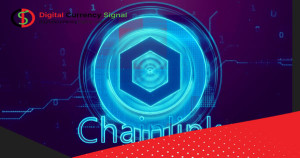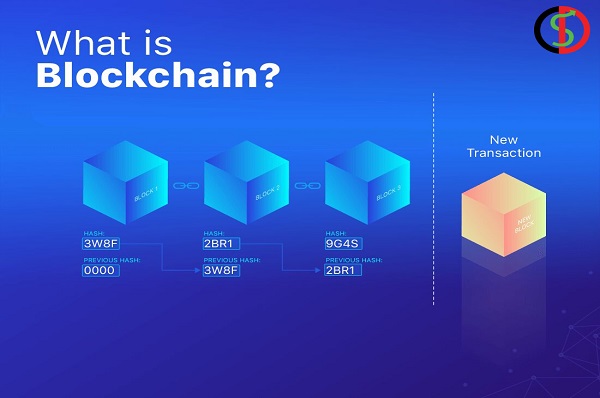Chainlink 2: A New Whitepaper from the Chainlink Network
Chainlink 2 is the latest iteration of the Chainlink network, released by its development team. According to the contents of this whitepaper, the development roadmap for Chainlink over the next three years has been fully outlined. This development and progress are also heavily focused on hybrid decentralized smart contracts. Chainlink is a network that entered the digital currency market in 2017. It serves as a bridge or intermediary that connects the real world and the data within it to blockchain and the smart contracts existing on it. If you are looking for detailed and comprehensive information about this network, read on.
What Is Chainlink 2?
Chainlink 2 is the new version of the Chainlink network, presented in the form of a whitepaper. This whitepaper summarizes the network’s evolution over a three-year period. In general, the whitepaper for the Chainlink network describes the transformation of decentralized oracle networks on this platform. Furthermore, according to Sergey Nazarov, the founder and CEO of Chainlink, a key driver of this industry is the hybrid smart contracts of Chainlink, which are introduced in this version.
To understand the concept of Chainlink 2, it’s helpful to first be familiar with the Chainlink platform. Chainlink is a type of decentralized oracle network that creates a connection between blockchain smart contracts and real-world data. Oracles are systems responsible for recording the daily performance of data streams in blockchain smart contracts. Since blockchain networks by themselves lack the ability to access real-world data, oracle systems have been a significant development in this space. Therefore, it can be concluded that Chainlink network is capable of running the oracle system concurrently on all blockchain networks with smart contracts.
Hybrid Smart Contracts and Chainlink 2
As you may know, the primary driver of Chainlink 2’s development is hybrid smart contracts. Typically, smart contracts are responsible for tokenizing assets. In other words, a contract is set up for various digital assets, and then the trading of these tokenized assets is controlled by smart contracts. Furthermore, some contracts operate based on a process called private key voting. In this working mechanism, users can cast their votes and opinions using their private keys and tokens.
Hybrid smart contracts are a combination of these two approaches, as implied by their name. According to Nazarov, hybrid smart contracts in Chainlink 2 are defined as a combination of immutable on-chain code and their functionality within Ethereum smart contracts. Moreover, in this exciting update, a trustworthy oracle can access off-chain computational resources and then connect to smart contracts.
The Future of Chainlink 2
Nazarov believes that hybrid smart contracts and oracle networks are paving the way for a promising future in the digital asset sector. Since Chainlink has successfully provided decentralized oracle services for the decentralized Ethereum ecosystem, this marks the starting point for various blockchains to access external data sources. Now, Chainlink 2 aims to utilize a new layer architecture called “MetaLayer” to execute composite smart contracts. According to Sergey Nazarov, the founder and CEO of this network, this phase of Chainlink’s development represents a crucial stage where all coordination takes place.

This coordination and planning will apply to extensive activities across all blockchains and off-chain systems. Chainlink 2 and the hybrid smart contracts it utilizes have the capability to integrate all the features of simple smart contracts, off-chain computations, and data proofs seamlessly. Nazarov believes that by implementing this plan and presenting Chainlink 2, the value of this network and its native digital currency will significantly increase.
Changes in Chainlink 2
When we examine the changes introduced in Chainlink 2, we can understand the rationale behind this update. The Chainlink network team believes that the expansion of decentralized oracles will lead to the development of a new generation of smart contracts. This theory holds true to a large extent, and its implementation will bring about significant changes, as outlined below.
Enhancing Privacy Protection: As seen, composite smart contracts in Chainlink 2 can access external data sources while providing a higher level of security in transactions through the second-layer blockchain. This capability enhances user privacy significantly and updates the network with higher frequency, reducing transaction costs. Additionally, the scalability of the OCR system aids in providing chainlink data feeds.
Ease of Network Management: Gatekeepers are individuals who provide automated trust in the network. This feature is used for processes such as reducing liquidity requirements and withdrawing products. Stewards are part of the network that solves the problem of decentralization. Therefore, with the introduction of Chainlink 2 composite smart contracts and the increased scalability of the network, the work of this segment becomes more manageable.
VRF Assurance: Hybrid smart contracts in Chainlink 2 include a system called VRF (Verifiable Random Function). This system improves the functionality of activities such as game development, NFTs, and transaction security provided by composite smart contracts.
The Multi-Network Nature of Chainlink 2
The most concise definition one can provide for Chainlink 2 is “the Chainlink network’s whitepaper introducing composite smart contracts.” This phrase alone holds multiple concepts and meanings. Hybrid smart contracts, which are the most influential factor in Chainlink 2, will ultimately advance decentralized oracle networks. These networks are referred to as Decentralized Oracle Networks (DONs) in the cross-chain linking rules. Their main task is to function as an off-chain computational layer and connect to blockchains to maintain security principles.
Now, imagine a moment where hybrid smart contracts successfully connect to an advertising network, a payment network, or any other external system and provide the necessary coordination for collaboration between these systems. This is precisely where MetaLayer comes into play. MetaLayer allows the network to communicate with more off-chain resources and provides the ability to update at a high frequency, helping reduce costs and ensure the security of NFTs. This new whitepaper represents the next stage in the development of the Chainlink network.

As you can see, the Chainlink network enables communication between real-world data and blockchain. Now, Chainlink intends to make this connection smarter by introducing hybrid smart contracts. The implementation of this update and the introduction of this new version of the Chainlink network will bring significant changes to the price of the network’s native digital currency. After presenting the new whitepaper for the Chainlink network, the digital currency LINK will enter a new phase of growth and development. Overall, Chainlink 2 aims to introduce the technology of hybrid smart contracts to the digital asset industry. This allows for the verification of oracle reliability before deployment.



